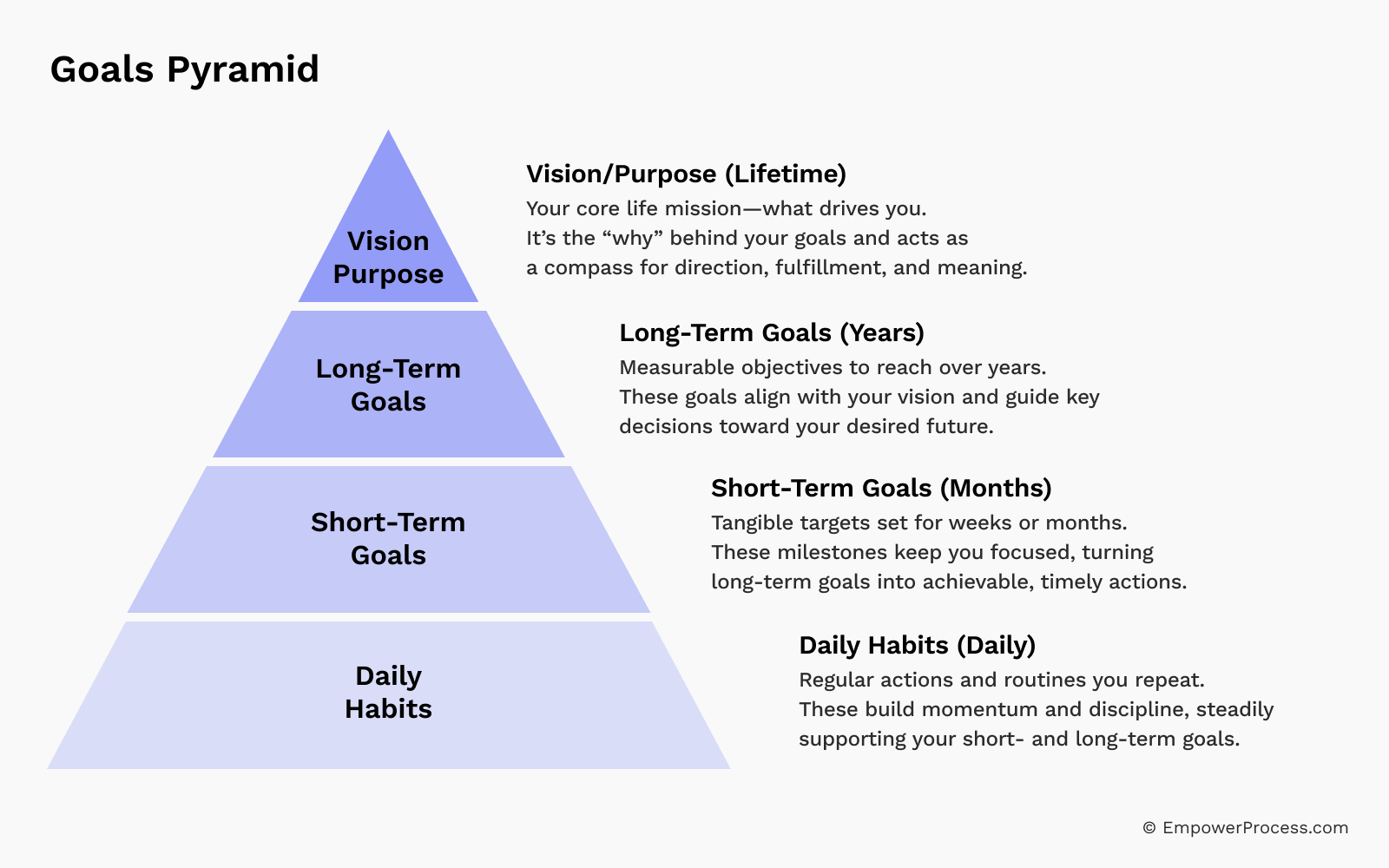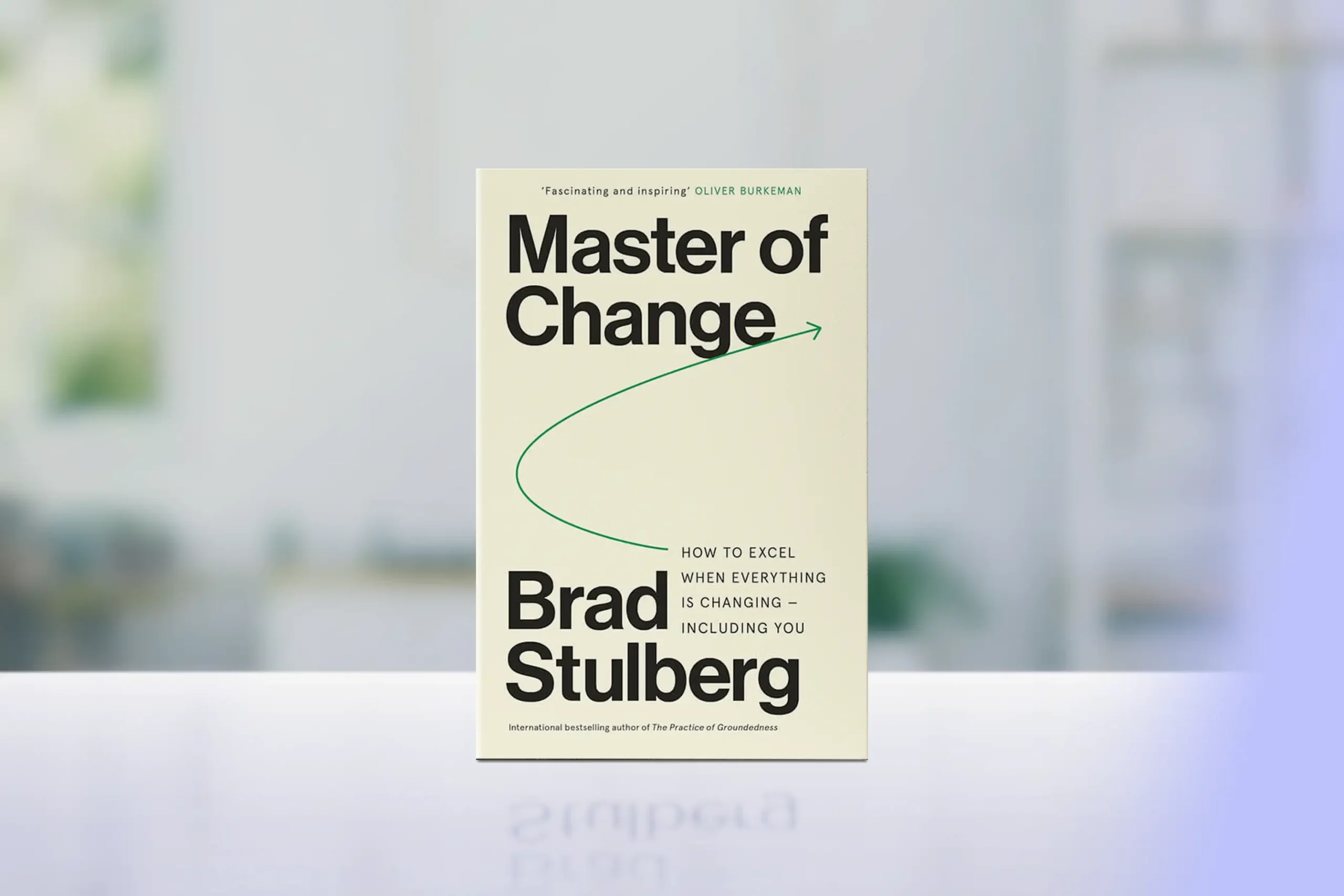Learning how to fall in love with the process rather than obsessing over outcomes can transform your relationship with goals, reduce anxiety, and create sustainable motivation that carries you through life’s inevitable challenges and setbacks.
Inside this article:
Imagine this: You wake up Monday morning and immediately check your phone for likes, followers, or messages. By Wednesday, you’re questioning everything because the numbers haven’t moved fast enough. If this sounds familiar, you’re caught in what psychologist David Niven, Ph.D., calls the “outcome trap.”
In his book “The 100 Simple Secrets of Successful People”, he reveals that life satisfaction is 22 percent more likely for those with a steady stream of minor accomplishments than those who express interest only in major accomplishments. Yet most of us remain fixated on the big wins, the final results, the dramatic transformations.
Here’s what changes everything: As James Clear puts it, “When you fall in love with the process rather than the product, you don’t have to wait to give yourself permission to be happy. You can be satisfied anytime your system is running.”

1. What Does “Falling in Love with the Process” Actually Mean?
When Roger Federer steps onto a tennis court, something remarkable happens. Win or lose, you can see genuine delight in the act of playing itself. This is what University of Quebec psychology professor Robert J. Vallerand calls “harmonious passion”—characterized by deep intrinsic motivation and genuine love for the work involved in achieving a goal.
Michael Jordan exemplified this beautifully. While fans remember his game-winning shots, Jordan himself often spoke about craving practice more than the games. The six championships were byproducts; the real love affair was with the daily grind of improvement. This mindset connects deeply with the principles of building growth mindset and developing self-discipline for personal growth.
Systems vs. Goals: A New Framework
James Clear revolutionized how we think about achievement through his distinction between systems and goals. As he explains in Atomic Habits, “Goals are about the results you want to achieve. Systems are about the processes that lead to those results.”

Your outcomes are lagging measures of your systems. If you want to predict your future results, don’t look at your goals—look at your daily systems. You might set a goal to write a novel, but it’s the system of writing 500 words every morning that actually produces the book. This approach aligns perfectly with the power of habit and building and breaking habits for growth.
In entrepreneurship, process love means finding genuine excitement in customer conversations and problem-solving sessions—not just in funding rounds. In fitness, it’s the runner who genuinely enjoys the morning ritual: the quiet streets, the rhythm of breathing, the meditation in motion. In relationships, it’s choosing to be fascinated by your partner’s thoughts and finding joy in small gestures of care. These examples reflect what research calls finding your passion in simple steps and discovering purpose in everyday life.
Key Takeaway: Process love means finding intrinsic value in the daily work itself, not just using it as a means to an external end.

2. Why Falling in Love with the Process Matters
The research on process-focused thinking reveals benefits that go far beyond achievement. Understanding these benefits can help you develop emotional intelligence and mastery over your mindset:
- Enhanced Psychological Well-being: A comprehensive study on mindfulness found that 52.9% of the well-being of respondents is influenced by the practice of mindfulness. Psychological research consistently shows that “focusing on the journey rather than just the destination leads to greater overall well-being.” This connects with research on mindfulness for beginners and the mind-body connection.
- Sustainable Motivation: Process-focused thinking creates “daily opportunities for little victories, which help sustain the motivation required to accomplish long-term goals.” As research shows, “Process promotes progress, and progress, on a neurochemical level, primes us to persist.” This principle underlies effective systems for staying motivated.
- Reduced Anxiety and Better Performance: The National Institutes of Health found that mindfulness-based approaches “reduce anxiety and depression” while also helping to “lower blood pressure and improve sleep.” A workplace mindfulness meta-analysis found programs “effectively reduce stress, burnout, mental distress, and somatic complaints.” These findings support strategies for managing anxiety in daily life and stress management.
- Avoiding the Dark Side of Outcome Obsession: Harvard Business School published “Goals Gone Wild“ revealing that aggressive goal-setting can lead to unethical behavior, increased risk-taking, and decreased intrinsic motivation. Pure outcome focus, without process integrity, often leads to shortcuts that ultimately backfire. This research emphasizes the importance of building confidence and self-esteem through authentic achievement.
Key Takeaway: Process focus enhances well-being, creates sustainable motivation, and paradoxically often leads to better outcomes than outcome obsession.

3. How to Change Your Mindset from Outcome to Process
Shifting from outcome to process thinking requires rewiring deeply ingrained mental patterns. This transformation involves many of the same principles found in personal growth and self-discovery:
- Recognize Warning Signs: Common signs include constant preoccupation with results, fear of failure that paralyzes action, and lack of enjoyment in daily tasks. Do you check your phone compulsively for metrics? Do you feel energized only by imagining end results rather than the work itself? Understanding these patterns is part of developing emotional intelligence.
- Adopt Identity-Based Thinking: James Clear’s identity-based approach suggests starting with identity rather than outcomes. “The goal is not to read a book, the goal is to become a reader. The goal is not to run a marathon, the goal is to become a runner.” Every time you show up for your process, you cast a vote for your new identity. This aligns with research on building confidence and self-esteem and discovering your life’s purpose.
- Practice Present-Moment Awareness: Research on daily stress and present-moment awareness shows that present-moment awareness “predicted enhanced responding to both immediate and future challenges.” Anchor your attention in the immediate experience of your activities. This practice connects with mindfulness for everyday life and the power of being present.
- Transform Your Goals: Focus on process goals rather than outcome goals. Instead of “lose 20 pounds,” try “exercise four times per week and eat vegetables with every meal.” Process goals put success entirely within your control. This approach reflects principles found in setting career goals effectively and aligning actions with life purpose.
Key Takeaway: Mindset shifts happen through recognizing outcome obsession patterns, adopting identity-based thinking, practicing present-moment awareness, and focusing on controllable process goals.

4. Practical Tips for Implementation
Cultivating process love becomes more natural with specific strategies that align with proven approaches to building better habits and personal development:
- Start with Micro-Processes: Begin with tiny, enjoyable actions that feel almost effortless. James Clear’s research shows that “getting 1 percent better every day counts for a lot in the long-run.” Start so small that the process feels playful rather than demanding. This mirrors the approach found in tiny habits and stepping out of your comfort zone gradually.
- Track Systems, Not Just Results: Create a simple tracking system for your process commitments. Did you write today? Did you exercise? These yes/no questions are more valuable than outcome metrics because they measure what’s actually under your control. This approach builds on principles from getting things done and time management strategies.
- Celebrate Small Wins: “Another key to falling in love with the process is recognizing and celebrating the small wins,” notes Dr. Kristen Sparrow in her analysis of process thinking. Every time you choose your process over immediate gratification, you’re literally rewiring your brain. This connects with research on building confidence and developing self-compassion.
- Design Your Environment: “‘Disciplined’ people are better at structuring their lives in a way that does not require heroic willpower,” notes Stanford researcher BJ Fogg. Remove friction from processes you want to love and add friction to processes you want to avoid. This principle appears in creating supportive environments and digital minimalism approaches.
- Embrace the Struggle: “Grit is passion and perseverance for long-term goals,” says Angela Duckworth. Get comfortable with the uncomfortable. Lean into repetition and routine—not as drudgery, but as the path to mastery. Find meaning in the challenge itself—the puzzle of finding the right word, the satisfaction of progress, the discipline of persistence. This mindset reflects grit and resilience and learning from setbacks.
Key Takeaway: Implementation requires starting small, tracking processes rather than outcomes, celebrating daily wins, designing supportive environments, and learning to find meaning in challenges.

5. Overcoming Common Obstacles
Even with understanding and tools, predictable obstacles will arise. Navigating these challenges draws on many principles found in resilience building and managing growth transitions at every stage of your life:
- “But I Need Goals for Direction”: Goals still matter, but their role changes. As performance expert Chris Mance explains: “First, set a goal. Next, figure out the steps to achieving that goal that are within your control. Then — (mostly) forget about the goal, and focus on nailing the steps instead.” This approach aligns with effective goal-setting strategies and career transitioning strategies.
- When Progress Feels Slow: James Clear describes the “valley of disappointment”—”the period where we put in effort but see little or no results.” When you love the process itself, slow progress doesn’t kill motivation because satisfaction doesn’t depend solely on visible results. This connects with understanding the role of failure in growth and staying motivated during challenges.
- Maintaining Motivation During Plateaus: “Fall in love with boredom. Fall in love with repetition and practice,” advises Buffer’s team. Plateaus become opportunities to explore deeper layers of your processes. This mindset reflects principles in mindfulness and meditation and finding balance.
- External Pressure: Develop “dual awareness”—track outcomes when necessary while keeping primary attention on process. Studies on mindfulness and behavior change show this dual awareness is sustainable with practice. This skill connects with managing stress and building emotional resilience.
Key Takeaway: Obstacles are predictable and can be navigated through maintaining direction while focusing on daily steps, finding motivation in the work itself, and protecting your process focus from external pressure.
6. Your Journey Forward
James Clear’s insight bears repeating: “When you fall in love with the process rather than the product, you don’t have to wait to give yourself permission to be happy. You can be satisfied anytime your system is running.” This reframes when fulfillment is available to you—not in some uncertain future, but every time you show up for your process.
This transformation connects with broader themes of intentional living and designing a life with purpose. As you develop this new relationship with process, you might also explore related areas like building a wellbeing routine and creating work-life balance.
Your Next Steps:
- Choose one area where you’re currently outcome-obsessed and identify the smallest possible process element you could practice for seven days
- Create simple tracking focused on consistency: Did you show up for your process today? Yes or no.
- Make the process enjoyable through better tools, pleasant environment, or more curiosity and presence
- Practice patience with yourself—learning to love process is itself a process that unfolds over time
Research consistently shows that process-focused satisfaction is more sustainable than outcome-dependent happiness. As one study on psychological well-being puts it: “Knowing you put in the work, that you gave something your all, breeds a special kind of confidence, fullness, and contentment that no one can take away from you.”
Transformation happens through daily choices to find satisfaction in the process itself, creating sustainable fulfillment that no external outcome can take away. Remember, learning how to fall in love with the process — not just the outcome — is the key.





